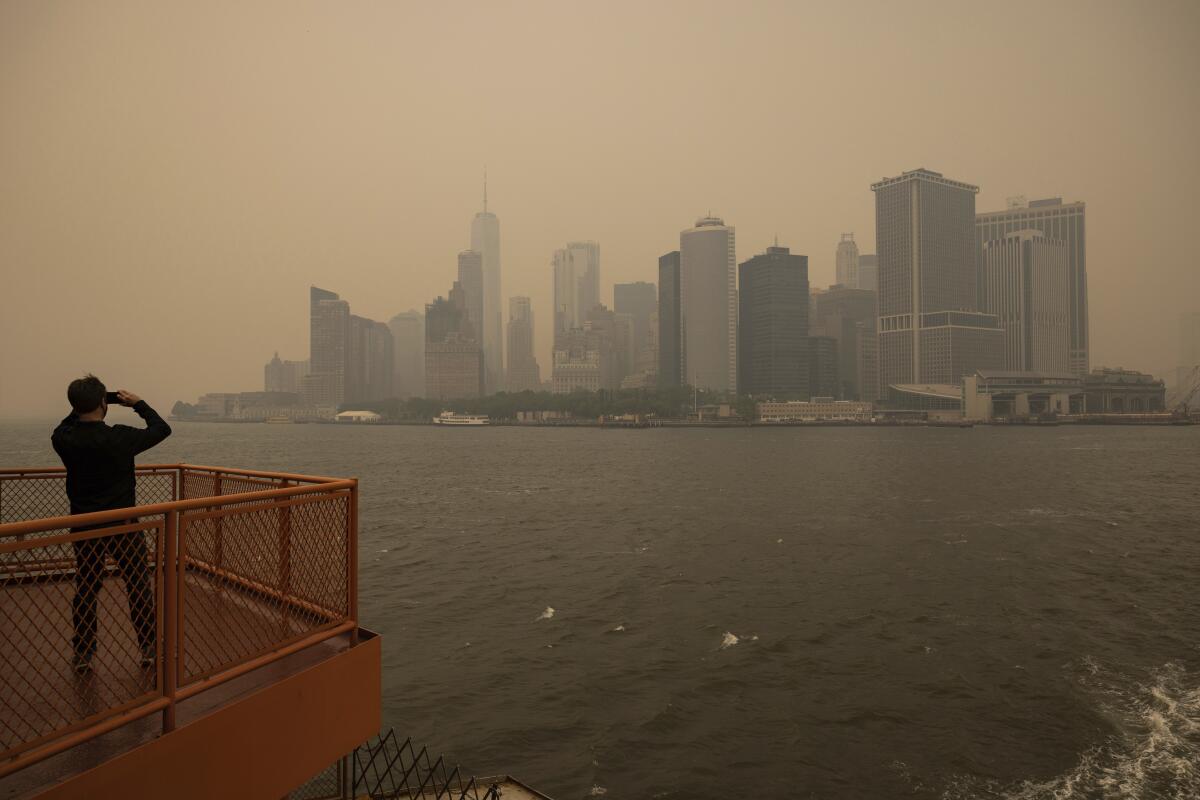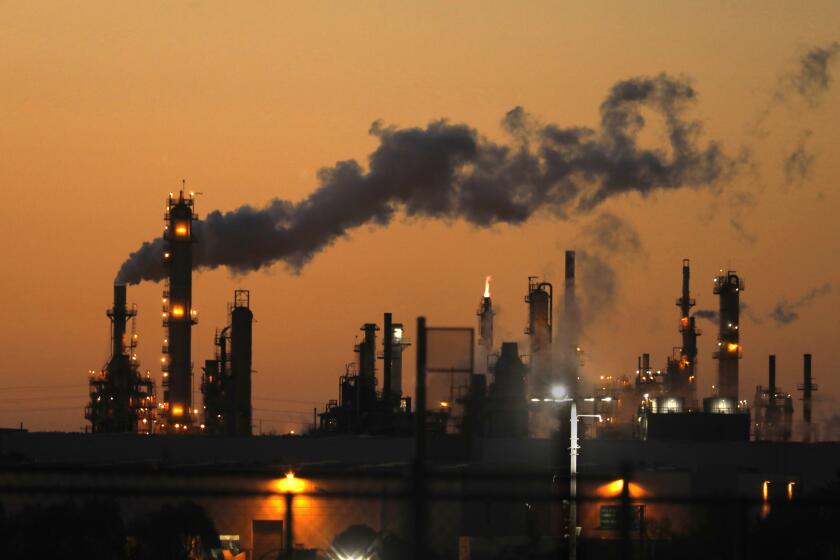Letters to the Editor: Pall over New York tells us: Don’t fly. Consume less. Stop burning fossil fuels

- Share via
To the editor: The smoky pall cast over much of the northeastern U.S. has obscured, among other things, news from the National Oceanic Atmospheric Administration that average carbon dioxide concentration in the atmosphere last month reached an unprecedented 424 parts per million, the highest since our arrival as a species.
Unlike wildfire smoke, invisible heat-trapping gasses will not dissipate relatively quickly. What, on a personal level, to do?
Having performed emission calculations for countless friends over the years, I can say confidently that failing the wherewithal to buy an electric car or go solar at your home, the biggest steps one can take to reduce their emissions are to reduce their consumerism, and to forgo a plane trip or two in favor of a car or, better yet, train.
Among the 18-20 tons of carbon dioxide expelled annually by the average American (still five times that of the average Latin American), those two behaviors typically account for a vastly outsized portion. Address them, and you can often lower your own emissions by 20%.
Finally, while the Inflation Reduction Act was a laudable first big step toward addressing the climate crisis, economists and scientists agree that a meaningful carbon fee applied throughout the economy would be the fastest and most dramatic mitigating measure on hand.
Jordan Sollitto, San Marino
..
To the editor: The levels of heat-trapping gases in the atmosphere are at their highest level yet, so we must reduce emissions as fast as possible. A low-carbon electric power sector will be the backbone of a low-carbon economy.
Right now, the United States does not have any legal limits on greenhouse gas emissions from power plants. Fortunately, the U.S. Environmental Protection Agency is working on regulations to limit them. This is a major step forward.
These regulations should be strengthened in the following ways: They must include small gas power plants, and they must mandate at least a 90% reduction in emissions for all gas and coal power plants by 2030.
This is necessary if we are to meet our target of cutting emissions in half by 2030.
Narayan Gopinathan, Los Angeles
The writer is a doctoral student at UCLA’s Institute of the Environment and Sustainability.
..
To the editor: There’s a disconnect in how the world deals with the climate crisis.
The concentration of carbon dioxide from burning coal, oil and natural gas are at levels unseen in human civilization. As a result, our planet is over-heating, and the impacts are devastating.
At the same time, clean, affordable alternatives like solar and wind power are increasingly available and promise huge benefits.
Why are we not transitioning more quickly to clean energy? Follow the money. Fossil fuel companies have a lot to lose.
The market value of fossil fuel reserves is trillions of dollars. To achieve climate goals, almost all coal and most gas and oil must stay in the ground.
Let’s demand that our elected officials begin now to phase out fossil fuels before it’s too late.
Robert Taylor, Santa Barbara







